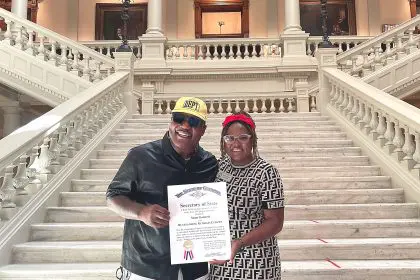Television lost one of its most influential figures with the passing of Leslie Charleson at 79. Her portrayal of Monica Quartermaine on “General Hospital” resonated deeply with audiences who grew up watching daytime television, particularly those who came of age during the show’s golden era in the late 1970s through the 1990s.
A groundbreaking legacy in daytime television
Before becoming a household name, Charleson blazed trails for women in television. Starting her career at 19, she defied the conventions of her era by pursuing acting professionally when few women had prominent roles behind or in front of the camera. Her journey began with ABC’s “A Flame in the Wind,” but it was her role in CBS‘s “Love Is a Many Splendored Thing” that first showcased her ability to handle complex storylines with nuance and depth.
The 1970s saw Charleson guest starring on numerous primetime shows that defined the era. Her appearances on “The Rockford Files,” “Happy Days,” and “Mannix” demonstrated her versatility as an actress. Her role as Dorothy Kimber on “Happy Days” became a cultural touchstone, particularly as Ron Howard’s first on-screen kiss — a moment that resonated with viewers who were experiencing their own coming-of-age stories.
Redefining strong women on television
When Charleson stepped into the role of Monica Quartermaine in 1977, she transformed what was possible for female characters in daytime television. Monica wasn’t just a love interest or a supporting character: she was a fully realized professional woman who balanced career ambitions with personal relationships. As a cardiologist, Monica broke gender barriers, showing viewers that women could excel in male-dominated fields while maintaining their authenticity.
The character’s journey through medical school, establishing her career and eventually becoming Chief of Staff at General Hospital provided representation that was ahead of its time. Monica’s professional achievements came with personal costs, challenging viewers to examine their own choices and sacrifices in pursuing their dreams.
Bringing depth to daytime drama
Charleson’s portrayal of Monica Quartermaine went beyond typical soap opera fare. Her character’s struggles with breast cancer in the 1990s brought awareness to women’s health issues and demonstrated how to handle serious medical conditions with dignity. The storyline educated viewers about the importance of early detection and regular screenings, while showing that a cancer diagnosis didn’t define a woman’s worth or potential.
The loss of three children throughout Monica’s story arc allowed Charleson to explore the depths of maternal grief in ways rarely seen on television. Her powerful performances helped destigmatize mental health discussions and showed viewers that it was okay to seek help during times of emotional crisis.
Impact on popular culture
Monica Quartermaine’s marriage to Alan Quartermaine became one of television’s most enduring relationships, spanning multiple decades and showcasing the complexity of long-term commitment. Their dynamic explored themes of trust, forgiveness and growth, providing viewers with a realistic portrayal of marriage that acknowledged both its challenges and rewards.
The wealthy, dysfunctional Quartermaine family became a cultural touchstone, particularly resonating with viewers who understood the complexities of family businesses and generational wealth. Through Monica’s outsider-turned-insider perspective, the show examined themes of class, privilege, and the true meaning of family.
Professional excellence and recognition
Charleson’s four Daytime Emmy nominations for Outstanding Lead Actress reflected her peer recognition, but her true impact went beyond awards. Her consistent delivery of powerful performances over four decades showed younger actors what dedication to craft looked like. She approached every scene — whether dramatic or comedic — with the same level of preparation and professionalism.
Her famous slapping scenes became legendary not just for their dramatic impact but for how they subverted expectations about how women could express anger on television. These moments — while entertaining — also sparked important discussions about gender dynamics and power in relationships.
Creating space for authentic storytelling
Throughout her career, Charleson advocated for storytelling that reflected real-world experiences. Her character’s journey from young doctor to respected medical professional paralleled the experiences of many viewers who were building their own careers and fighting for recognition in their fields.
Even in recent years, as health challenges limited her appearances, Charleson continued to bring authenticity to her role. Her reduced screen time was incorporated into Monica’s story in ways that respected both the character’s history and the actress’s dignity, showing how television could handle aging with grace and realism.
A continuing influence
Charleson’s passing marks more than the end of an era in television; it represents the close of a chapter in cultural history that helped shape contemporary entertainment. Her work on “General Hospital” influenced how television portrays professional women, complex relationships and family dynamics. The groundwork she laid continues to impact how stories are told across all media platforms, making space for more nuanced, authentic representations of women’s experiences.
Her legacy lives on through the countless viewers who saw themselves reflected in Monica Quartermaine’s struggles and triumphs, and through the generations of actors who learned from her example of professionalism and dedication to craft. While Charleson may no longer be with us, her contributions to television and popular culture continue to resonate with audiences who value authentic storytelling and complex character development.










